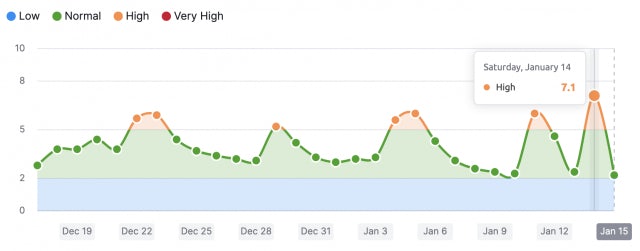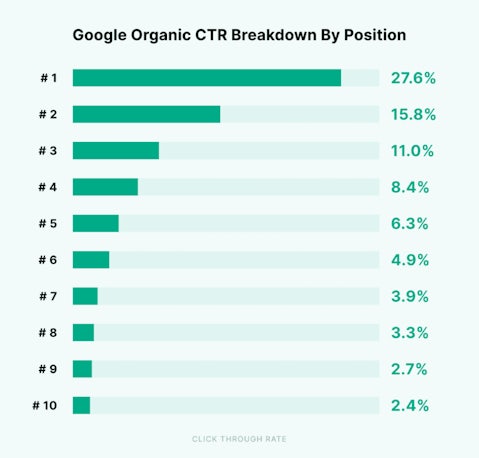Welcome to the latest blog from Impression’s SEO team on Google algorithm and search industry updates, where we explore the latest updates, changes and trends that occurred in January 2023.
Our traffic light system will help guide you to the articles that need your greatest attention. Watch out for red light updates as they are major changes that need you to take action, whereas amber updates are certainly worth knowing, but aren’t as urgent as red updates. And finally, green light updates which are great for your SEO and site knowledge but are less significant than others.
Keen to know more about any of these changes and what they mean for your SEO? Get in touch or visit our SEO agency page to find out how we can help.
In this blog, we’ll explore a few different search and algorithm updates that occurred in December, including:
- Yandex ‘leak’ reveals 1,922 search ranking factors
- Key Yandex ranking factors
- Weekend Google search ranking algorithm update - Saturday, January 14th
- Google December 2022 link spam update done rolling out
- How Google's continuous scroll can impact SEO
- How will continuous scroll affect SEO and its search experience?
- How can SEO specialists still optimise or adapt?
- Google search will debut chatbot features this year
Yandex ‘leak’ reveals 1,922 search ranking factors

One of the biggest algorithm updates this month wasn’t about Google, but rather about Yandex. Yandex is a Russian technology company best known for its search engine; the search engine has a 50% market share in Russia, and a 0.55% global market share, making it the 5th biggest search engine in the world.
And this month, its search ranking factors were leaked, revealing 1,922 signals that indicate how websites are ranked in the Yandex search results. Of the list of factors, 988 were listed as deprecated, meaning that 64% of the document is not actively used, or been superseded by new ranking factors.
Although a lot of the descriptions of the ranking factors were thin, it’s really interesting for SEOs to gain insights into how a search engine works.
Key Yandex ranking factors
Here are a few of the key Yandex ranking signals you should know:
- PageRank: The first ranking factor listed; Yandex definitely uses a form of PageRank.
- URL construction: Yandex takes into account numbers, capital letters and the amount of trailing slashes in a URL structure.
- Freshness: The age and the date the page was last updated is a ranking factor.
- Clicks & CTR: Yandex uses metrics such as ratio of clicks and how often users click as a ranking factor.
- Dwell time: 63 of the ranking factors mention Dwell Time (the time users take to evaluate the page).
- Backlinks: The age of backlinks, the link relevance, including the non-commercial nature of each link and the ratio of ‘good’ to ‘bad’ backlinks.
- Metrika: The usage of data from the analytics platform Metrika has been confirmed, including how the number of similar visitors and the average time spent impacts rankings.
One of the most interesting ranking factors here is the confirmation of Metrika data usage, as it validates that both paid traffic and direct traffic can impact organic traffic on Yandex.
There are literally hundreds of other leaked Yandex ranking factors to go through, so we’d recommend researching the ranking factors yourselves to get a full overview. You can visit the original list of ranking factors in code format if you’re interested.
What does this mean for me?
Unless you’re specifically trying to rank on Yandex, the leak won’t affect you directly. However, there is a lot of speculation as to how the Yandex ranking factors relate to the mysterious ranking factors of Google.
Yandex and Google are two different search engines, and therefore we can’t say that the ranking signals that Yandex uses are the same as Google. However Yandex’s source code has brought to light some significant ranking signals that the SEO community might not have been aware of, and understanding these factors might give us an advantage moving forward.
Regardless of whether or not Google uses any of these ranking factors (in which some cases they’ve explicitly said no), it’s important that as SEO professionals we remain attentive to Google’s signals and continue to optimise on-site content ethically.
Weekend Google search ranking algorithm update – Saturday, January 14th

You may have noticed some ranking changes that were somewhat unpredictable from January 14th likely returning back to normality the following week. Industry experts suspect an unconfirmed Google update to be the culprit, with multiple sites experiencing loss of traffic.
What does this mean?
Some sites will have experienced volatility in their rankings from the 14th of January up to the 22nd but it is likely that they have normalised after this. So if you’ve seen a downturn in rankings and or visibility that hasn’t since been resolved, you may need to do some further investigation.
Shown here is a graph from the SEO tool Semrush that highlights Google’s SERP fluctuations over the past 2 weeks. As you can see January 14th ranks at 7.1 on this volatility scale which is considered high. It also massively up from days prior which further suggests Google has released an update.

If your site saw changes over this period that were seemingly unexplained this could be the cause, it is also likely that the traffic drop-offs you might have seen have since been rectified.
Google December 2022 link spam update done rolling out

Google announced that the December 2022 algorithm update against link spamming was concluded on January 12th. Rolling out over a period of 29 days beginning December 14th.
So what does this mean?
Google added that by using SpamBrain for links it can not only “detect spam directly, but it can also now detect both sites buying links, and sites used for the purpose of passing outgoing links.” Google references this in their 20118 spam report, discussing their machine learning systems to enhance spam detection.
Google used the term “nullifying” in the context of its efforts to reduce link spam, rather than “penalising” connections. Nullifying here means discounting, not including or disregarding the links. This approach has been applied continuously since Penguin 4.0 was issued back in 2016.
Why is this important?
It’s possible that a decrease in rankings in Google could be attributed to their anti-link spam algorithm. Making certain that all hyperlinks are credible, as well as fulfilling Google’s webmaster practices is necessary. As well, strive to better your webpage so that it gradually earns customer linkages with ease.
How Google’s continuous scroll can impact SEO

In December, the continuous scroll was introduced in the desktop search results. The concept of scrolling is pervasive on the web today. Most webpages are extended “below the fold,” and content is mostly reachable through scrolling, the easiest way to navigate websites.
It is termed as a “continuous scroll” instead of an infinite scrolling because it lasts as long as it is content to show.
According to results by Backlinko, it goes without saying that most searchers click webpages on page 1 of Google.

How will continuous scroll affect SEO and its search experience?
SEO experts have made predictions on what this means for queries and overall SEO such as:
- There will no longer be page 1 results – meaning that the request of “we want to rank on Page 1” may subside as 6 pages of results will appear.
- More results will be browsed – as scrolling is so ingrained in us in our day-to-day lives, this means that users will continue looking for new answers to their queries. Which means higher click-through rates for lower-ranking domains.
- More ads and features on top – With Google having more potential space to fill ads and special features, there is also a better excuse to push organic results further down.
How can SEO specialists still optimise or adapt?
- Focus on low-hanging fruits which can potentially rank in the top 3 – Ranking in the top 1 to 10 is still advised, however, find the low-hanging fruits already ranking and optimize those pages for the keyphrases where they can reach the top 3.
- Stand out in the SERPs with page titles – consider featured snippets, special characters and emojis.
- Make use of Google features like images and ‘People Also Ask’ – Other ways of fast-tracking your way to the top and being more clickable than your competition are image and video content. Look at repurposing your written content as images or videos using various formats.
- Creating dedicated images (photos, visualisation infographics) or videos (interviews, tutorials, reviews) can boost your chances of getting clicked.
Google search will debut chatbot features this year

In November 2022, OpenAI released its viral bot ChatGPT and since then it’s been non-stop chatter about the potential of AI, its accuracy and new tools and techniques that will be released to try and compete. And of course, how this technology will challenge Google’s status as one of the largest tech companies in the world.
In December, Google issued a ‘Code Red’ about the release of OpenAI’s new ChatGPT feature, and brought in Google founders Larry Page and Sergey Brin to discuss their AI strategy.
Now, according to the New York Times “Google now intends to unveil more than 20 new products and demonstrate a version of its search engine with chatbot features this year.” They also discussed three things that Google will prioritise as a part of their features, including:
- Getting facts right.
- Ensuring safety.
- Getting rid of misinformation.
Overall, the SEO community is likely to see an influx of tools and research with AI at the heart of it over the coming year. And now it looks like Google will be a part of it. But will they be a key player? And will they impact the way we approach our everyday SEO activities? Keep following our Google Algorithm Updates blog to find out.





